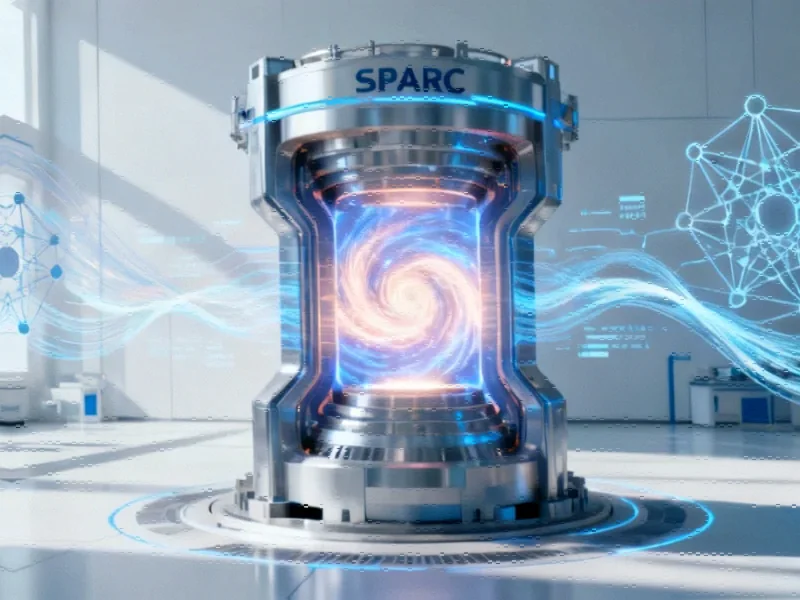Barrier Technology Breakthrough
Researchers have developed a quantified barrier system that effectively confines iodide migration in perovskite solar cells, according to a recent study published in Nature Communications. The breakthrough addresses one of the most significant challenges in perovskite photovoltaics – the instability caused by iodide ion movement from the perovskite layer to adjacent transport layers. Sources indicate this migration has been a primary factor limiting the commercial viability of perovskite solar cells despite their high efficiency potential.
Table of Contents
Understanding Iodide Migration
Analysts suggest that negatively charged iodide ions migrate from the perovskite to the carrier transport layer due to combined diffusion and drift movements at the interface. The report states that diffusion is driven by differences in free ion concentration across the interface, while drift arises from forces exerted by the built-in electric field. At the perovskite/HTL interface, both the direction of iodide ion diffusion and the built-in electric-field in the depletion region point from the perovskite to the hole transport layer, creating conditions that facilitate ion loss.
According to the research team’s findings, the potential drop in the depletion region plays a crucial role in mitigating iodide ion loss from the perovskite surface. The researchers reportedly applied reverse bias to perovskite devices to increase this potential drop, thereby enhancing the drift of iodide ions. When the potential drop becomes sufficiently large, the enhanced drift motion establishes a dynamic equilibrium with diffusion, completely confining iodide ion migration within the HTL depletion region.
Composite Barrier Strategy
Since perovskite solar cells cannot function under reverse bias during normal operation, researchers designed a composite strategy that combines a scattering blocking layer and an ordered dipole monolayer to replicate this barrier effect. The approach reportedly creates a drift electric-field atop the perovskite to suppress iodide ion migration., according to technology trends
The team first deposited a 1.5 nm thick HfO layer on the perovskite surface using atomic-layer-deposition methods. Analysis indicated this ultra-thin layer did not affect charge carrier transport between the perovskite and HTL due to quantum tunneling effects. The report states that this HfO layer alone reduced iodide diffusion by 30-50% across four different perovskite compositions through ion scattering mechanisms.
Molecular Dipole Enhancement
To provide additional suppression, researchers prepared an ordered self-assembled dipole monolayer on the HfO surface using (4-(2-(trifluoromethyl)pyrimidin-5-yl)phenyl) boronic acid (CF-PBAPy) molecules. Analysis of the electrostatic potential distribution showed that fluorine and nitrogen atoms at the molecular terminal have higher electron cloud density, while the anchoring group has relatively lower electron density. This configuration establishes a directional electric-field that inhibits iodide ion diffusion.
Kelvin probe force microscopy measurements revealed that the HfO/CF-PBAPy heterostructure increased the work function of perovskite thin films by 0.60-0.65 eV, creating a surface electric-field with potential drop exceeding the threshold energy required to suppress ion migration. The modified perovskite surface maintained highly stable surface potential distribution, demonstrating the uniformity of the interfacial electric-field., according to recent studies
Device Performance and Stability
The surface electric-field generated by the molecular dipole layer caused a significant upward shift of the vacuum energy level, creating energy-level mismatch with conventional HTL materials. To address this challenge, researchers reportedly employed poly(vinylcarbazole) (PVK) as the HTL, which features a deeper highest occupied molecular orbital level that aligns properly with the modified perovskite layer., according to emerging trends
According to performance data, the FAPbI/HfO/CF-PBAPy/PVK device achieved a power conversion efficiency of 25.86% with certified steady-state efficiency of 25.70%. The champion device with an active area of 1 cm² reportedly achieved 24.50% efficiency. Devices based on three other perovskite compositions showed steady-state efficiencies ranging from 24.72% to 25.23%.
Unprecedented Stability Results
Stability testing revealed remarkable performance retention under harsh conditions. Maximum power point degradation tests under continuous light illumination at 85°C showed that the composite barrier structure almost completely restricted outward migration of iodine ions from the perovskite. Time-of-flight secondary ion mass spectrometry analysis indicated that iodine signal intensity in the modified devices was only around one-thousandth of that in control samples.
The target samples exhibited exceptional stability in humid heat aging tests (85°C/85% relative humidity for 1000 hours) and light/dark cycling aging tests (50 cycles at 85°C). X-ray diffraction patterns of perovskite materials after stability tests showed negligible attenuation of diffraction peaks in barrier-protected devices, demonstrating that constraining iodine outflow effectively stabilizes the perovskite lattice during operation.
Commercial Implications
Industry analysts suggest this breakthrough could significantly accelerate the commercialization timeline for perovskite solar technology. The ability to prevent iodide migration while maintaining high efficiency addresses what has been considered the fundamental stability challenge in perovskite photovoltaics. Researchers indicate the composite barrier approach is compatible with existing fabrication processes, potentially enabling scale-up to industrial manufacturing.
The study demonstrates that quantified barrier engineering can effectively suppress ion migration without compromising electrical performance, opening new pathways for developing durable, high-efficiency perovskite solar cells suitable for practical applications. Further research is reportedly underway to optimize the barrier composition and explore applications in tandem solar cell architectures.
Related Articles You May Find Interesting
- Intel’s Panther Lake Ushers in New Era of Agentic AI Computing for Windows 11
- Record Coal Surge Undermines Global Climate Goals Despite Renewable Energy Boom
- Classic 1998 Shooter Unreal Transformed with Full Ray Tracing Overhaul via RTX R
- Researchers tout vector-based automated tuning in PostgreSQL
- Intel’s Panther Lake Chipset Paves Way for Agentic AI Transformation in Windows
References & Further Reading
This article draws from multiple authoritative sources. For more information, please consult:
- http://en.wikipedia.org/wiki/Depletion_region
- http://en.wikipedia.org/wiki/Monolayer
- http://en.wikipedia.org/wiki/P–n_junction
- http://en.wikipedia.org/wiki/Iodide
- http://en.wikipedia.org/wiki/Biasing
This article aggregates information from publicly available sources. All trademarks and copyrights belong to their respective owners.
Note: Featured image is for illustrative purposes only and does not represent any specific product, service, or entity mentioned in this article.



